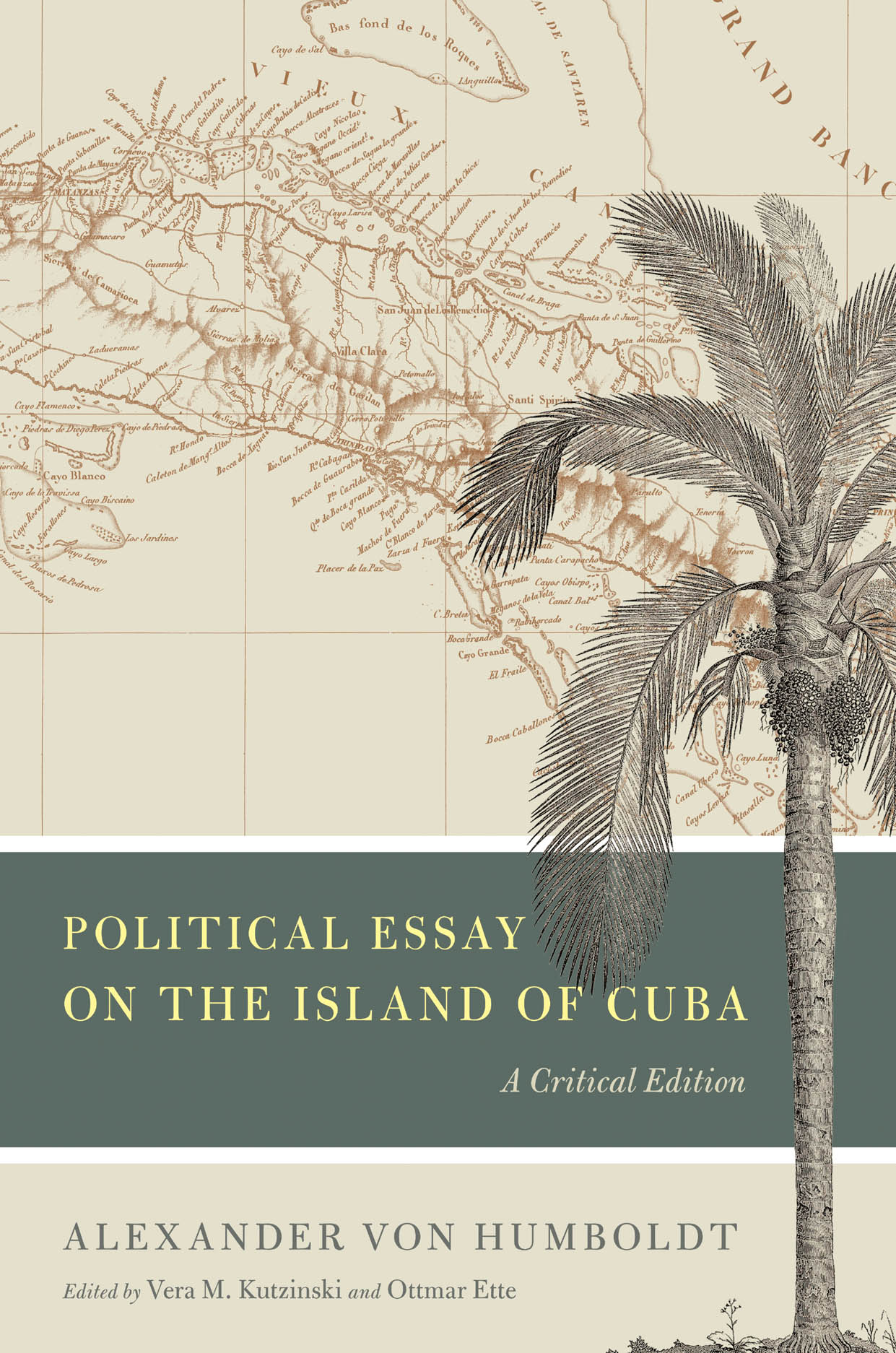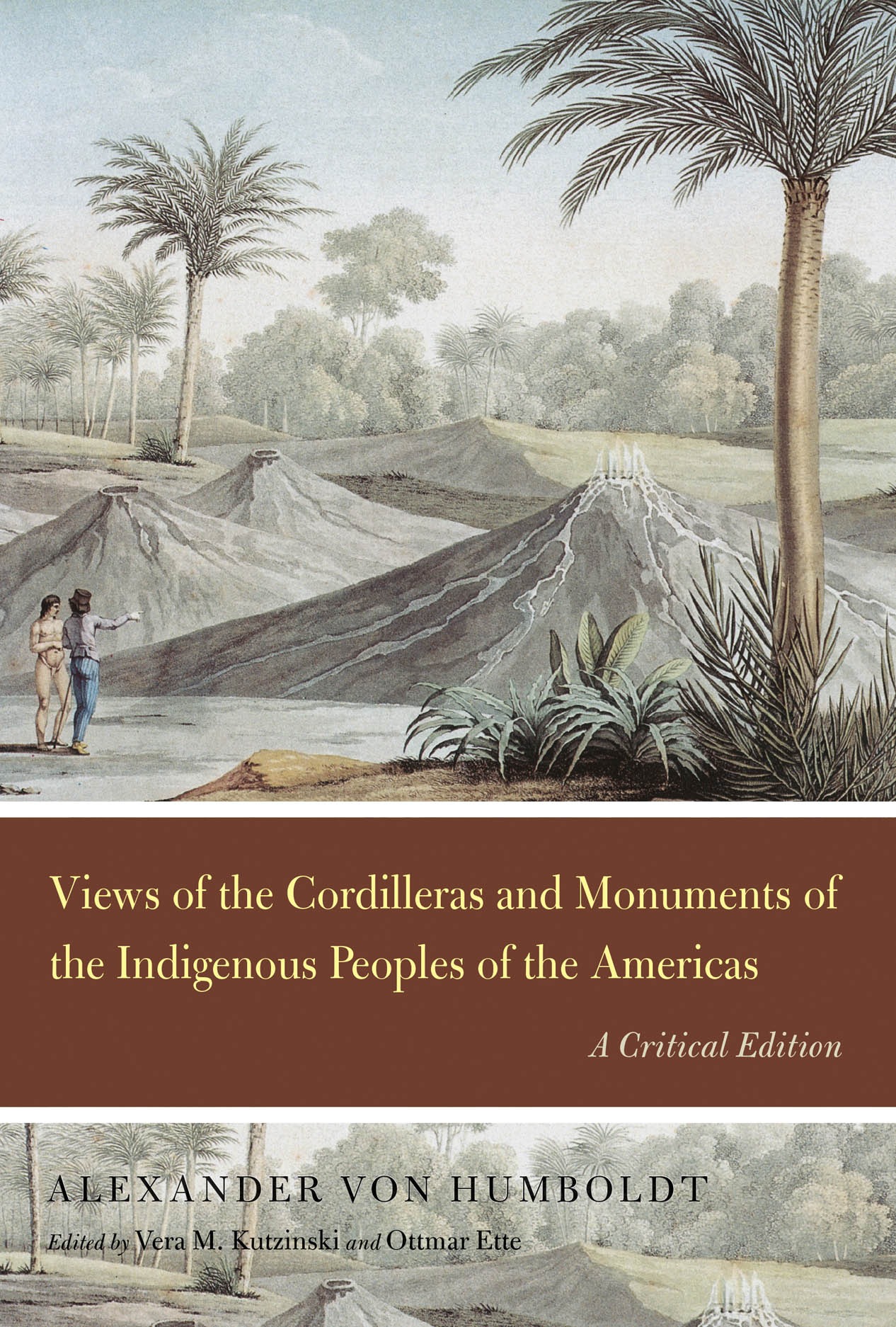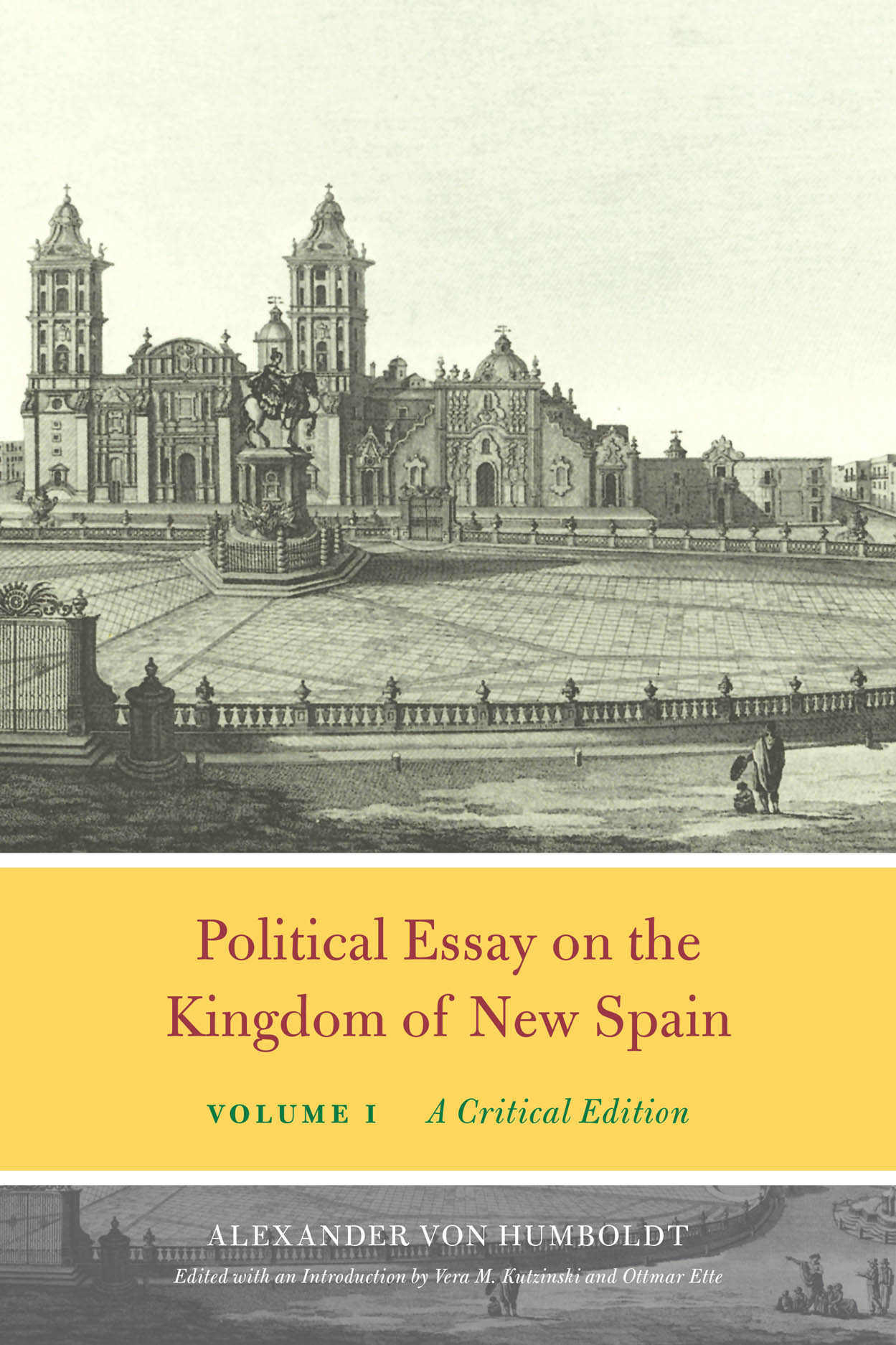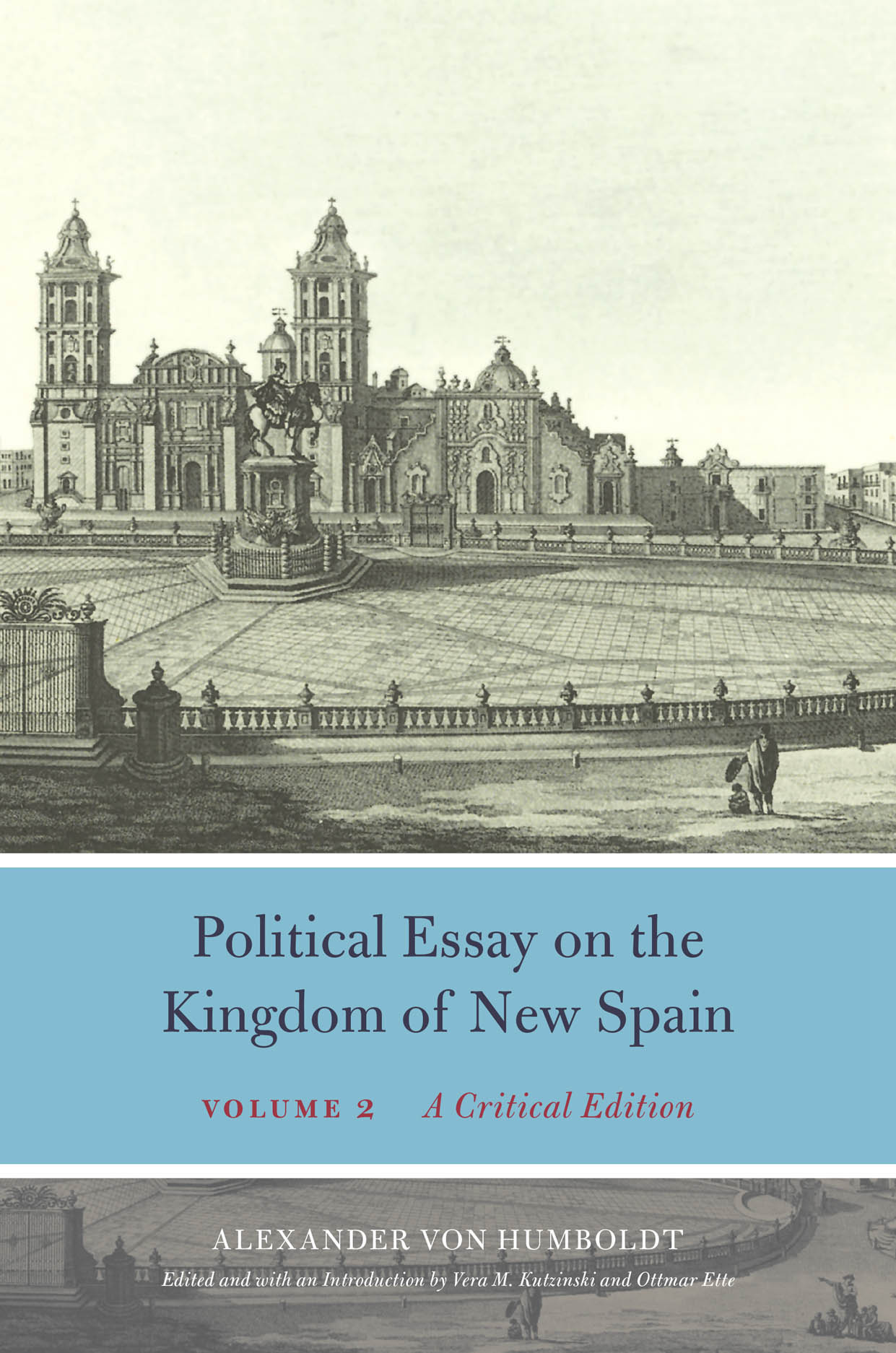Cuban Networks
The Patriotic Society (Cuba)
In his Political Essay on the Island of Cuba, Alexander von Humboldt frequently mentions the Sociedad Económica de Amigos del País—literally, Economic Society of the Friends of the Country. Since it was also known as Sociedad Patriótica de Amigos del País, or Real Sociedad Patriótica de la Havana, he often simply calls it Patriotic Society.
This influential Society had been founded in Havana in 1793, when governor Luis de las Casas y Aragorri (1745–1800) approved a petition from twenty-seven prominent Cubans to create an independent body to promote scientific, economic, and cultural endeavors. Foremost among the petitioners was Francisco de Arango y Parreño, who became Humboldt’s longtime correspondent.
Humboldt mentions the Society’s vital role in Cuban economic and social politics when discussing its favorable disposition toward improving the living conditions of the slaves in the island. Yet, aware of the shortcomings of these proposals, he called for more profound changes of the living and labor conditions of Cuban slaves. Pushing towards a slave-free Cuban society, Humboldt addressed Cuba’s political and economic elite, most of whom he had come to know well during meetings with the Patriotic Society.
The Patriotic Society had invited Humboldt for his second stay in Cuba in 1804. The Marquis of Someruelos (1754–1813), governor and captain-general of the island and president of the Patriotic Society, asked Humboldt to investigate mineralogical deposits in the hills of Guanabacoa and Regla near Havana. To the disappointment of the Cubans, Humboldt could not find any proof of significant silver or gold deposits. He presented his results before the Society on April 13, 1804, as recorded in the Society’s protocols. A slightly revised “Noticia mineralógica” [Mineralogical Note] was published in the Cuban journal El Patriota Américano in 1812. In 1817, the Society gave Humboldt an honorary membership.
Further Readings
Thomas, Hugh. Cuba, or, The Pursuit of Freedom. New York: Da Capo Press, 1998 [Chapter VI: The Challenge of Haiti, p. 72-84.]
Schmidt-Nowara, Christopher. Empire and antislavery: Spain, Cuba, and Puerto Rico, 1833-1874. Pittsburgh: University of Pittsburgh Press, 1999. [Chapter I: The Limits of the Revolution…, p. 14-36.]
Gott, Richard. Cuba: A New History. New Haven: Yale University Press, 2005.
Ortiz, Fernando. Recopilación para la Historia de la Sociedad Económica Habanera: Tomo IV. Vol. 2, Índices de las Memorias de la Sociedad Económica de Amigos del País 1793-1893 por Adrian del Valle. La Habana: Molina y Compañía, 1938.
Zeuske, Michael. “Humboldt en Cuba, 1800/1801 y 1804 - Huellas de un enigma.”; HiN—Internationale Zeitschrift für Humboldt-Studien 11.20 (2010): 7–19.
Minutes of the Patriotic Society
The original minutes of the Patriotic Society’s meeting on April 13, 1804, when Alexander von Humboldt presented his mineralogical findings to his Cuban hosts, is at the Instituto de Literatura y Lingüística (Havana, Cuba). The date on the record is falsely given as April 31, 1804 which has caused some Humboldt scholars to question the date of Humboldt’s departure from Cuba on April 29, 1804. But the Society used to gather in weekly meetings that coincided with the entries leading and following this one (dated as April 6 and April 20). Also, there is no April 31!
Source:
Sociedad Económica de Amigos del País. Actas de la Sociedad Económica de Amigos del País; 1 de junio de 1802 - 22 de mayo 1807, p. 122-25.
Humboldt’s Mineralogical Note
Humboldt delivered a report before the Patriotic Society on April 13, 1804 after having finished his field work on the mineralogical qualities of the surrounding mountains of Buanabacoa (April 7). First published in the Cuban journal El Patriota Américano (1812), the HiE website presents this text both in the Spanish original and in an English translation by Giorleny Altamirano Rayo. The original El Patriota Americano is located at the Biblioteca Nacional José Martí, Habana, Cuba.
Source:
Humboldt, Alexander von. “Noticia mineralógica del cerro de Buanabacoa: comunicada al Excmo. Sr. marqués de Someruelos por el baron de Humboldt, el año de 1804.” El Patriota Americano 2 (1812): 29-32.
A Warm Welcome—A Wide Net
As Humboldt recounts in the Political Essay on the Island of Cuba, the people of Havana received him and Aimé Bonpland with “utmost hospitality.” They met prominent planters and members of the Patriotic Society, such as Francisco de Arango y Parreño, Nicolás de la Puerta Calvo y O’Farrill, the Count of Jaruco y Mopox, and the Marqués de Real Socorro (1774–1811).
The travelers exchanged information with members of the local scientific community, such as the physician Tomás Romay, the chemist Francisco Ramírez, the astronomer Antonio Robredo, and the botanist Antonio de la Ossa. They also met with many local authorities and prominent intellectuals, among them the philosophers José de la Luz y Caballero (1762–1835), and the poet Manuel de Zequeira y Arango (1760–1846).
Further Readings
Caballero, José Agustín. Obras. Ed. Edelberto Leyva Lajara. La Habana: Imagen Contemporánea, 1999.
Fahy, Joseph Augustine. The antislavery thought of Jose Agustin Caballero, Juan Jose Diaz de Espada, and Felix Varela, in Cuba, 1791-1823. Thesis (doctoral), Harvard University, 1983.
Leal, Luis. A Luis Leal reader. Ed. Ilan Stavans. Evanston: Northwestern University Press, 2007 [p. 124-30].
Chao, Raúl Eduardo. Poetas y memorias de Cuba: 500 años de poetas y poemas de Cuba y el entorno en que vivieron. Miami, Fla: Ediciones Universal, 2010.
Chang-Rodríguez, Raquel. “Colonial Voices of the Hispanic Caribbean.” In A history of literature in the Caribbean, ed. Albert James Arnold, Julio Rodríguez-Luis, Michael Dash, p. 111-40. Amsterdam: John Benjamins Publishing Company, 1994.
Zequeira y Arango, Manuel, and Manuel Justo de Rubalcava. Poesías. La Habana: Comisión Nacional Cubana de la UNESCO, 1964.
Francisco de Arango y Parreño
Lawyer, politician, and planter Francisco de Arango y Parreño (1765–1837) was one of the most prominent figures in late eighteenth and early nineteenth-century Cuba. The revolution in Saint-Domingue caused Arango to moderate his position on slavery and led him to consider possibilities for the abolition of the slave trade. In 1792, he initiated the founding of the Patriotic Society. Arango met Humboldt during both of his stays and showed him his own modern ingenio “Las Ninfas” and other sugar estates in the region.
Humboldt relied on Arango for economic and statistical data on Cuba. They were to maintain a lively correspondence for several years after Humboldt’s departure from Cuba. Most notably, Arango commented on Humboldt’s Essai politique, which led to the publication of the Observaciones sobre el Ensayo Político de la Isla de Cuba por el baron de Humboldt [Observations about the Political Essay on the Island of Cuba by Baron von Humboldt] in 1827. These observations had a strong impact on later Spanish editions of Humboldt’s text, in which Arango’s notes became a para-textual part of Humboldt’s Essay.
A copy of the 1827 Spanish edition of Humboldt’s Essai politique sur l’île de Cuba is in the archives of the Instituto de Literatura y Lingüística (Havana, Cuba). It presumably belonged to Arango. An example of Arango’s comments to the text, which became his “Observaciones,” is visible at the bottom of the righthand page.
Further Readings
Arango y Parreño, Francisco de. Obras. Ed. Gloria García Rodríguez. La Habana: Ediciones Imagen Contemporánea, 2005.
Johnson, Sherry. The Social Transformation of Eighteenth-Century Cuba. Gainesville: University Presses of Florida, 2001.
Murray, David R. Odious Commerce: Britain, Spain and the Abolition of the Cuban Slave Trade. Cambridge: Cambridge University Press, 2002.
Stein, Barbara H., and Stanley J. Stein. Edge of Crisis: War and Trade in the Spanish Atlantic, 1789-1808. Baltimore: Johns Hopkins University Press, 2009.
Holeman, Jamie. “‘A Peculiar Character of Mildness’: The Image of a Humane Slavery in Nineteenth-Century Cuba.” In Francisco Arango y la Invención de la Cuba Azucarera, ed. Maria Dolores González-Ripoll and Izaskun Álvarez Cuartero, p. 41-54. Salamanca: Ediciones Universidad de Salamanca, 2010.
Tomich, Dale. “The Wealth of Empire, Francico Arango y Parreño, Political Economy, and the Second Slavery in Cuba.” In Interpreting Spanish Colonialism: Empires, Nations, and Legends, ed. Christopher Schmidt-Nowara and John M. Nieto-Phillips, p. 55-86. Albuquerque: University of New Mexico Press, 2005.
Grafenstein, Johanna von. “The Atlantic World at the Time of the Haitian Revolution: The Point of View of Francisco de Arango y Parreño.” In Latin America and the Atlantic World/ El Mundo atlántico y América Latina (1500-1850); Essays in honor of Horst Pietschmann, ed. Renate Pieper and Peer Schmidt, p. 351-66. Cologne (Germany): Böhlau Verlag, 2005.
Zeuske, Michael. “Comparing or interlinking? Economic comparisons of early nineteenth-century slave systems in the Americas in historical perspective.” In Slave Systems, Ancient and Modern, ed. Enrico dal Lago and Constantina Katsari, p. 148-84. Cambridge/New York: Cambridge University Press, 2008.
Arango’s Observations of 1827
Francisco de Arango y Parreño’s Observaciones sobre el Ensayo Político de la Isla de Cuba por el baron de Humboldt [Observations about the Political Essay on the Island of Cuba by the Baron von Humboldt]:
a.) Spanish original and searchable Spanish PDF
b.) English translation by Giorleny Altamirano Rayo
Source:
Arango y Parreño, Francisco de. “Observaciones al ‘Ensayo político sobre la isla de Cuba,’ escritas en 1827.” In Obras del Excmo. Señor D. Francisco de Arango y Parreño, Ed. Vidal Morales y Morales and Manuel Villanova, vol. 2, p. 533-46. Habana: Howson y Heinen, 1889.
Other editions:
Arango y Parreño, Francisco. Obras de don Francisco de Arango y Parreño. La Habana: Dirección de Cultura, Ministerio de Educación, 1952.
Arango y Parreño, Francisco de. “Observaciones escritas en 1827 al Ensayo político sobre la isla de Cuba.” In Obras, ed. Gloria García Rodríguez, vol. 2, p. 255–264. La Habana, Cuba: Imagen Contemporánea, Ciencias Sociales, 2005.
José de la Luz y Caballero
Humboldt also stayed in close contact with other eminent Cubans, such as the philosopher and reformist educator José Cipriano y Pío de la Luz y Caballero (1800–1862). During his three-year sojourn in the U.S. and Europe, Luz y Caballero visited Humboldt in Paris and later in Berlin. One of the earliest promoters of the idea of a Cuban nation, Luz y Caballero foresaw the importance of Humboldt’s Political Essay on the Island of Cuba, awarding the eminent Prussian with the epithet “second discoverer of Cuba.”
Further Readings
Luz y Caballero, José de la. Obras: Escritos educativos (Vol. II). Ensayo introductorio, compilación y notas. Ed. Alicia Conde Rodríguez. Vol. 18, Biblioteca de clásicos cubanos. La Habana: Ed. Imagen Contemporánea, 2001.
Ramos, Julio. Divergent Modernities: Culture and Politics in Nineteenth-Century Latin America. Durham: Duke University Press, 2001.
Méndez Rodenas, Adriana. Gender and Nationalism in Colonial Cuba: The Travels of Santa Cruz y Montalvo, Condesa de Merlin. Nashville: Vanderbilt University Press, 1998.
Rojas, Rafael. Essays in Cuban Intellectual History. New York: Palgrave Macmillan, 2008 [Chapter 5, Gallery of Cuban Writing, p. 93-114.]
Brickhouse, Anna. Transamerican Literary Relations and Nineteenth-Century Public Sphere. Cambridge: Cambridge University Press, 2004.




